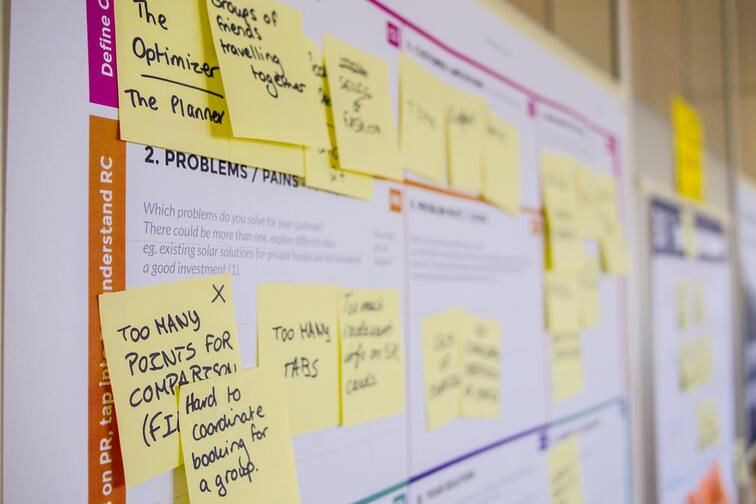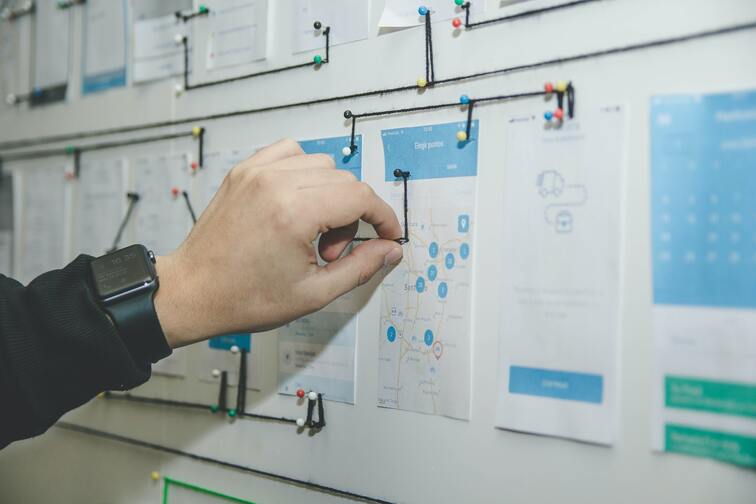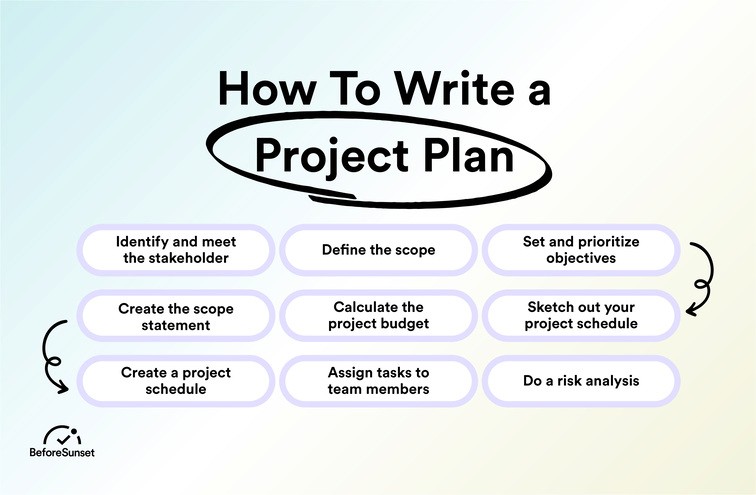Every project is different, but there are some things that it takes to be a successful project manager. The first step is to understand project planning best practices. How do you create a great plan for your project? Here's how:

What is a Project Plan?
A project plan is a document that outlines the scope, objectives, and stakeholders of a project. It also includes a timeline for completing the various tasks and milestones necessary to complete the project, as well as a budget for resources and materials.
The project plan serves as a roadmap for the project team to follow and helps to ensure that all necessary steps are taken to successfully complete the project on time and within budget. It is important to regularly review and update the project plan to ensure that the project stays on track and that any changes or challenges are properly addressed.
Why Do You Need a Project Plan?
If you've been going at it alone, start treating your project like a business. Businesses have to plan for the future. They have budgets. Contracts. Budgets are built on estimates; estimates are built from plans. Plans are built from research.
You don't want a surprise party thrown for you without any warning, now do you?
So let's make sure all our bases are covered before we get started so we can avoid last-minute surprises and keep our clients happy...and coming back for more!

1. To establish the goals and objectives of the project
It is important to establish the goals and objectives of a project at the outset because they provide a clear focus and direction for the project team. Without well-defined goals and objectives, it can be difficult to determine what tasks and activities are most important and should be prioritized. In addition, goals and objectives can help to align the efforts of the project team and ensure that everyone is working towards the same end result.
Having clear goals and objectives also helps to communicate the purpose and value of the project to stakeholders, and can help to gain support and buy-in for the project. In addition, goals and objectives can serve as a measure of success for the project, allowing you to determine whether or not the project has achieved its intended outcomes.
2. To establish a timeline for the project
Establishing a timeline for a project is important because it helps to organize the tasks and milestones that need to be completed in order to complete the project on time. A timeline can also help to identify any potential bottlenecks or challenges that may arise during the project, and allow you to take steps to address them before they become major issues.
In addition to helping to manage the project, a timeline can also be useful for communicating the project plan to stakeholders, such as team members, management, and customers. By providing a clear and detailed timeline, you can help stakeholders understand what is expected of them and when, and keep them informed about the project's progress.
3. To assign responsibilities to team members
Assigning responsibilities to team members is important for a number of reasons. First, it helps to ensure that all necessary tasks are being completed. By assigning specific responsibilities to individual team members, you can be confident that the work is being handled efficiently and effectively.
Additionally, assigning responsibilities helps to clearly define roles within the team, which can increase accountability and improve communication. It also allows team members to develop their skills and expertise in specific areas, which can be beneficial for both their personal and professional growth.
4. To manage risk
Risk management is a critical aspect of any project, as it helps to identify and address potential issues that could impact the success of the project. By proactively managing risk, you can minimize the likelihood of these issues occurring and ensure that the project stays on track.
Risk management also helps to protect the project from unexpected events that could cause delays or setbacks. Additionally, effective risk management can increase the confidence of stakeholders in the project, as it demonstrates a proactive and thorough approach to project management.
5. To track and measure progress
Tracking and measuring progress is essential for the success of any project, as it allows you to monitor the progress of the project and ensure that it is on track to meet its goals and objectives. By regularly tracking and measuring progress, you can identify areas where the project is falling behind or facing challenges, and take corrective actions to get the project back on track.
Additionally, tracking and measuring progress can help to identify areas where the project is doing well, which can help to build confidence and motivation among the project team.
6. To maintain a clear communication channel
Good communication is crucial for ensuring that all team members are on the same page, as well as for fostering a positive and productive work environment. By maintaining a clear communication channel, you can ensure that team members have access to the information they need to complete their tasks, and can address any issues or concerns in a timely and effective manner.
Good communication can also help to build trust and respect among team members, which is important for building a cohesive and successful team.
7. To ensure the project is meeting expectations
It is important to ensure that a project is meeting expectations in order to ensure its success. This involves setting clear goals and objectives for the project and regularly checking in to see if these are being met. By doing so, you can identify any issues or challenges that may be hindering progress, and take steps to address them.
Additionally, regularly assessing whether the project is meeting expectations helps to keep stakeholders informed about the progress of the project, and can help to build confidence in the project team and its ability to deliver on its commitments.
8. To identify and allocate resources
Identifying and allocating resources is a critical step in the project management process, as it ensures that the project has the necessary resources to be completed successfully. These resources can include physical resources such as materials and equipment, as well as human resources such as team members and external contractors.
Allocating resources effectively involves considering the specific needs of the project, as well as the availability and cost of these resources.
By identifying and allocating resources appropriately, you can ensure that the project has the support it needs to be completed efficiently and effectively. Failing to allocate resources properly can lead to delays, budget overruns, and other problems that can jeopardize the success of the project.
9. To maintain project quality
Maintaining project quality is essential for a project to succeed because it ensures that the project is delivered on time, within budget, and meets the required specifications and expectations. A project with poor quality will likely experience delays, cost overruns, and customer dissatisfaction, which can lead to project failure.
By maintaining project quality, you can ensure that the project is completed efficiently and effectively and that it meets the needs and expectations of all stakeholders. This includes regularly monitoring and controlling the quality of the project, using quality assurance techniques and processes, and identifying and addressing any issues or defects that may arise.
Maintaining project quality is an ongoing process that requires attention and effort throughout the entire project lifecycle, and is crucial for the success of the project.
10. To reach a successful conclusion
Reaching a successful conclusion is an essential element of a successful project because it signifies that the project has been completed and all objectives have been achieved. A project that does not reach a successful conclusion may be considered a failure, as it has not fully delivered on its intended outcomes. In order to reach a successful conclusion, a project must follow a defined process and plan, including setting clear objectives, establishing a timeline, and allocating resources.
It is important to regularly monitor and track progress, identify and address any issues or challenges that may arise, and adjust the plan as needed. By reaching a successful conclusion, you can demonstrate that the project has been successfully executed and that it has met the needs and expectations of all stakeholders. This can help to build trust and confidence in the project team and the organization and can pave the way for future success.

What Are The Basic Project Planning Steps?
There are a number of factors that need to be considered when planning a project. The idea is to reduce the risk and increase the likelihood of project success but this isn't always possible. Here we'll go through basic project planning steps in order to get going...
Step 1: Identify and meet the stakeholder
Identifying and meeting stakeholders is an important step in basic project planning because stakeholders are individuals or groups who are impacted by or have an interest in the project. Stakeholders can include the project team, customers, clients, sponsors, and any other parties who are affected by the project or who have a vested interest in its outcome. In order to effectively plan and execute a project, it is important to identify all stakeholders and understand their needs, expectations, and concerns.
This may involve conducting a stakeholder analysis, which involves identifying and evaluating the interests and influence of each stakeholder. Once stakeholders have been identified, it is important to regularly communicate with and engage them throughout the project lifecycle to ensure that their needs and expectations are being met.
This can help to build trust and support for the project and can facilitate project success.
Step 2: Define the scope
It helps to establish the boundaries and parameters of the project. The scope of a project defines what the project will deliver, as well as what it will not deliver. This includes identifying the specific objectives and goals of the project, as well as any constraints or limitations that may impact the project.
Defining the scope is important because it helps to ensure that the project stays on track and remains focused on achieving its specific objectives. It also helps to prevent scope creep, which occurs when the project expands beyond its original scope without proper planning and approval.
By clearly defining the scope of the project, you can help to ensure that the project stays on schedule and within budget and that it delivers the desired results.
Step 3: Set and prioritize objectives
Setting and prioritizing objectives is an important step in basic project planning because it helps to define the purpose and goals of the project, and establishes a roadmap for achieving those goals. Objectives should be specific, measurable, achievable, relevant, and time-bound (SMART).
Prioritizing objectives involves ranking them in order of importance, and determining which objectives are most critical to the success of the project. This helps to ensure that the project stays focused and that resources are allocated appropriately.
By setting and prioritizing objectives, you can help to ensure that the project stays on track and that all stakeholders understand the purpose and goals of the project. It also helps to ensure that the project is aligned with the overall strategic goals of the organization.
Step 4: Create the scope statement
The scope statement is an important document that outlines the goals, objectives, and deliverables of a project. It serves as a reference point for the project team, stakeholders, and sponsors, and helps to define the boundaries and constraints of the project.
Creating the scope statement is a key step in the basic project planning process, as it helps to ensure that the project stays on track and delivers the desired results. It should be developed at the outset of the project and should be reviewed and updated as needed throughout the project to reflect any changes in scope or direction.
The scope statement should be clear, concise, and accurately reflect the needs and expectations of all stakeholders. It should also be aligned with the project's overall vision and objectives and should provide a roadmap for the project team to follow as they work toward project completion.
Step 5: Calculate the project budget
Calculating the project budget is an essential step in the basic project planning process, as it helps to ensure that the project has sufficient financial resources to complete all planned activities and deliver the desired results. The project budget should be based on a detailed estimate of the costs associated with each aspect of the project, including materials, labor, and any external services or consultants that may be required. It is important to be as accurate and comprehensive as possible when calculating the project budget, as this will help to avoid any unexpected costs or delays down the line.
In addition to estimating the costs of the project, it is also important to consider any potential risks or uncertainties that may impact the budget and to develop contingency plans to address these.
Once the project budget has been calculated, it should be reviewed and approved by the appropriate stakeholders and should be monitored and tracked throughout the project to ensure that the project stays within its financial limits.
Step 6: Sketch out your project schedule
As a step in basic project planning, it is important to sketch out a project schedule to ensure that all necessary tasks are accounted for and that resources are allocated appropriately. This can be done by creating a list of all tasks that need to be completed, estimating the amount of time each task will take, and arranging the tasks in a logical order based on dependencies and priorities.
It is also important to consider any potential roadblocks or challenges that may arise and to include buffer time in the schedule to allow for unexpected issues. Once the schedule has been created, it should be reviewed and adjusted as needed to ensure that it is feasible and aligns with the overall goals of the project.
Regular updates and progress reviews should also be built into the schedule to ensure that the project stays on track and that any necessary adjustments can be made in a timely manner.

Step 7: Create a project schedule
Creating a project schedule is an important step in basic project planning that helps to ensure that a project is completed on time and within budget. To create a project schedule, it is necessary to identify all of the tasks that need to be completed and to estimate how long each task will take.
The tasks should then be arranged in a logical order based on dependencies and priorities, and any potential roadblocks or challenges should be accounted for. It is important to review the schedule regularly and to make adjustments as needed to ensure that the project stays on track. In addition, it is helpful to include buffer time in the schedule to allow for unexpected issues that may arise.
By creating a detailed and accurate project schedule, project managers can better manage resources, track progress, and make informed decisions throughout the project.
Step 8: Assign tasks to team members
Assigning tasks to team members is an important step in basic project planning. This helps to ensure that all necessary tasks are completed in a timely and efficient manner. When assigning tasks, it is important to consider the skills and expertise of each team member and match the tasks to their strengths.
It is also important to clearly communicate the expectations and deadlines for each task to ensure that team members are aware of their responsibilities and can plan accordingly.
By assigning tasks thoughtfully and effectively, project managers can help to ensure that their team is able to work collaboratively and effectively towards the successful completion of the project.
Step 9: Do a risk analysis
Doing a risk analysis is an important step in basic project planning. This involves identifying and evaluating potential risks that could impact the success of the project.
Risks can come in many forms, including technical, financial, or organizational. It is important to carefully consider all potential risks in order to develop strategies to mitigate or manage them. This may involve creating contingency plans, securing additional resources, or adjusting the project scope or timeline.
By identifying and addressing potential risks early on, project managers can help to ensure that their project stays on track and meets its objectives.
What Are The Key Elements of a Project Plan?
There are several key elements that are typically included in a project plan. These elements include the project's scope, which defines the boundaries and limits of the project; the project's objectives, which outline the specific goals and outcomes that the project aims to achieve; the project's stakeholders, who are the individuals or groups that have a vested interest in the project's success; and the project's timeline, which outlines the tasks and milestones that need to be completed in order to complete the project on time.
Other key elements of a project plan may include a budget for resources and materials, a risk management plan to identify and mitigate potential risks, and a communication plan to keep stakeholders informed about the project's progress.
In addition, a project plan may also include a resource plan to outline the personnel and other resources that will be needed to complete the project, as well as a quality plan to ensure that the project is completed to a high standard.

Tools to Plan a Project
There are a variety of tools that can be used to plan a project, depending on the size and complexity of the project. Some common tools for project planning include:
Gantt Charts
These charts visually depict the tasks and milestones of a project, along with their dependencies and the timeline for completion. Gantt charts can be created using project management software or spreadsheet programs.
Mind Maps
These diagrams allow you to brainstorm and organize ideas and tasks in a visual format. Mind mapping software can be used to create mind maps, or you can use a whiteboard or paper and pen.
Kanban Boards
These boards allow you to track the progress of tasks by moving them through different stages (e.g., "to do," "in progress," "done"). Kanban boards can be created using project management software or a physical board with sticky notes.
Project Management Software
There are many different project management software programs available, ranging from simple task-tracking tools to more comprehensive project planning and collaboration platforms. These programs can help you to create and share project plans, assign tasks to team members, and track progress.
Spreadsheet Programs
Simple spreadsheet programs like Microsoft Excel or Google Sheets can be used to create project plans and track progress by creating lists of tasks and using formulas to calculate project metrics.
Ultimately, the best tool for planning a project will depend on the needs and preferences of your team and the specific requirements of your project.
Project Planning With BeforeSunset
BeforeSunset can be a valuable tool for ensuring that your project stays on track and is completed on time. By using it, you and your team can accurately track the time that is being spent on each task and milestone, and use this information to identify any areas where time is being wasted or where additional resources may be needed. This can help you to identify bottlenecks and inefficiencies in your project process, and take steps to address them.
In addition to helping you to track and optimize the use of time, BeforeSunset can also be useful for providing accurate estimates of how long a task or milestone will take to complete. This can be helpful for planning future projects and for creating more accurate project schedules.
Overall, BeforeSunset can help your project succeed by giving you a better understanding of how time is being used and helping you to identify and address any issues that may be affecting the project's progress.
By using BeforeSunset, you can ensure that your project stays on track and is completed efficiently and effectively.


